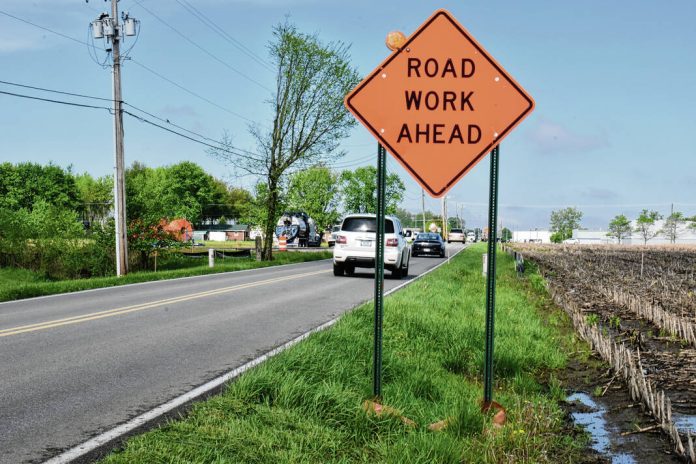The Indiana Department of Transportation will begin piloting camera speed-limit enforcement in Hoosier highway construction zones next month, the agency announced Wednesday.
It’ll target speeding of 11 miles per hour over the speed limit and greater.
In 2023, Indiana recorded more than 8,000 crashes in work zones—injuring 1,750 people and killing 33. About 270 people have died in work zone crashes over the last decade, per INDOT.
“The goal of the Safe Zones program is to slow drivers down, reduce crashes, and most importantly, save lives,” INDOT Commissioner Mike Smith said in a news release.
“Speed continues to be a factor in work zone crashes and changing driver behavior is crucial to making work zones safer for drivers and road workers,” he continued. “For everyone’s safety, I urge drivers to wear their seat belts, avoid distractions and follow the posted speed limit.”
Lawmakers authorized the five-year pilot during the 2023 session.
The agency will kick its pilot off Aug. 14 in Hancock County’s Interstate 70 construction zone and plans to add other sites to the program “over time,” it said.
House Enrolled Act 1015 authorizes INDOT to use the camera systems in up to four sites per year.
The law requires the agency to post signs at worksite entrances notifying drivers that an automated speed control system is in use.
The camera system, which must be calibrated annually by an independent laboratory, will use speed timing devices to monitor vehicle speeds.
When it determines a vehicle is traveling 11 miles per hour or more above the speed limit, it’ll take a picture of the rear license plate. Under Indiana law, the pictures can only be used to enforce traffic offenses under the pilot, can’t be publicly disclosed and must be destroyed within two years.
“After the data is validated, violations will be certified and issued to the owner of the vehicle by mail,” the news release reads.
INDOT will begin the pilot with a pre-enforcement period. It’ll sent out courtesy notices, but won’t fine drivers.
Once that ends, a first violation will result in a zero-fine warning. A second violation will lead to a $75 civil penalty and a third to a $150 penalty. The money will go to the state’s General Fund. Because they’re civil penalties, drivers will see no points added to their driver’s licenses.
Drivers can contest the violations by submitting proof that they didn’t own the vehicle, weren’t driving it, or that it was reported stolen—and was unrecovered—at the time of the alleged speeding. They can also dispute the system’s accuracy, or argue that workers weren’t present at the time.
However, the Indiana Safe Zones’ answers to frequently asked questions indicate that just because drivers can’t see construction workers doesn’t mean they’re not there. Crews behind barriers are also considered active workers.
INDOT will collect data for the program, but can’t use it for surveillance or other law enforcement programs under state law. Instead, the agency will report its findings in public annual reports.
The agency is responsible for building and maintaining interstate highways, U.S. routes and state roads in Indiana, including overpasses, ramps, signs and traffic signals.
By Leslie Bonilla Muñiz — The Indiana Capital Chronicle.com is an independent, not-for-profit news organization that covers state government, policy and elections.





